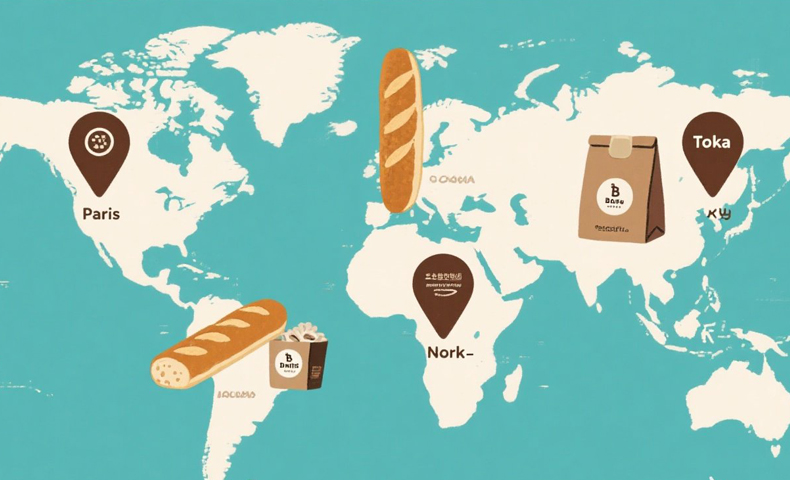How Coffee Brands Leverage Co-Branding for Growth
Co-branding is a powerful strategy for coffee brands to increase their market reach and strengthen their brand image. If your coffee brand isn’t already utilizing this strategy, you might be missing out on a significant opportunity to boost sales and connect with new customer segments. But what exactly is co-branding, and how can coffee brands leverage it effectively?
Why Co-Branding Works for Coffee Brands
Co-branding allows coffee brands to collaborate with complementary businesses, creating joint products or campaigns that benefit both parties. By partnering with a well-known brand or company, coffee brands can increase their visibility and tap into new customer bases. The right co-branding partnership can lead to higher sales, improved brand equity, and enhanced customer loyalty.
1. What is Co-Branding and How Does it Work for Coffee Brands?
PAS Strategy:
You might be wondering, what exactly does co-branding mean for coffee brands, and how does it work? Co-branding involves partnering with another brand to create a product that features both companies’ names and identities. For coffee brands, this can mean pairing up with a well-known chocolate brand, a dairy company, or even a popular bakery to produce co-branded coffee products.
Co-branding in the coffee industry can take various forms, such as limited edition products, co-branded packaging, or joint marketing campaigns. This strategy allows coffee brands to expand their reach and create unique offerings that stand out in the crowded marketplace.
How Co-Branding Works for Coffee Brands
Co-branding works by leveraging the strengths of both brands. By collaborating, coffee brands can access each other’s customer base, boosting brand awareness and fostering loyalty. When done right, both brands benefit from increased visibility and exposure.

Table: Co-Branding Examples in the Coffee Industry
| Co-Branding Example | Partners | Product Type |
|---|---|---|
| Coffee + Chocolate | Coffee brand & chocolate company | Coffee-flavored chocolates or coffee-infused treats |
| Coffee + Milk | Coffee brand & dairy brand | Coffee with flavored milk options (e.g., vanilla, caramel) |
| Coffee + Bakery | Coffee brand & bakery | Special coffee blends paired with bakery items |
2. Why Do Coffee Brands Choose Co-Branding Strategies?
PAS Strategy:
You may be asking, why should coffee brands opt for co-branding strategies? Co-branding offers numerous benefits, including expanded reach, enhanced credibility, and access to new markets. It’s a way for coffee brands to create unique offerings that customers can’t find elsewhere.
Through co-branding, coffee brands can position themselves as innovative and collaborative, showing consumers that they are willing to partner with other brands to bring exciting products to market.
The Benefits of Co-Branding for Coffee Brands
- Increased Brand Reach: By partnering with another brand, coffee companies can tap into new customer segments they may not have had access to before.
- Enhanced Credibility: Partnering with a well-established brand can lend credibility to a coffee brand, improving customer trust.
- Cost-Effective Marketing: Co-branding can be a more affordable marketing strategy since both brands share the cost of product development, promotion, and distribution.

Table: Benefits of Co-Branding for Coffee Brands
| Benefit | Explanation |
|---|---|
| Increased Reach | Access to the partner’s customer base and market presence. |
| Enhanced Credibility | Associating with a trusted brand boosts brand trust. |
| Cost Savings | Shared costs for marketing and product development reduce expenses. |
3. What Types of Co-Branding Strategies Do Coffee Brands Use?
PAS Strategy:
Wondering what types of co-branding strategies are best for coffee brands? There are several co-branding strategies that coffee brands can adopt depending on their objectives and the type of partner they choose to collaborate with.
Co-branding can be as simple as combining products or as complex as joint marketing campaigns. Let’s explore the different types of co-branding strategies that have proven successful for coffee brands.
Common Types of Co-Branding Strategies
- Ingredient Co-Branding: This involves partnering with a brand that provides an ingredient, like chocolate or milk, to enhance the coffee product.
- Marketing Co-Branding: This includes joint advertising or promotional campaigns where both brands share marketing efforts.
- Packaging Co-Branding: Both brands’ logos and images appear on the packaging, signaling a partnership between the two brands.
Table: Types of Co-Branding Strategies for Coffee Brands
| Type of Co-Branding | Example | Benefits |
|---|---|---|
| Ingredient Co-Branding | Coffee + chocolate | Unique product offering, appeal to both coffee and chocolate lovers |
| Marketing Co-Branding | Coffee + fitness brand | Joint marketing efforts, shared advertising costs |
| Packaging Co-Branding | Coffee + premium bakery | Combined branding creates an upscale appeal |
4. How Can Coffee Brands Select the Right Partner for Co-Branding?
PAS Strategy:
How do you find the right partner for your co-branding campaign? Choosing the right partner is crucial to the success of your campaign. If the partnership doesn’t align well with your brand, it could confuse customers or even damage your reputation.
Selecting a partner involves understanding both brands’ target audiences, values, and business goals. It’s essential that both companies have complementary objectives and align in terms of quality, messaging, and customer expectations.
Key Considerations When Choosing a Co-Branding Partner
- Brand Values: Make sure the potential partner’s values align with your own.
- Target Audience: Choose a brand that has a similar or complementary customer base.
- Reputation: Consider the potential partner’s reputation in the market. A well-established brand can bring credibility to your coffee brand.

Table: Factors to Consider When Selecting a Co-Branding Partner
| Factor | Consideration |
|---|---|
| Brand Values | Ensure both brands share similar values and ethics. |
| Target Audience | Look for a brand whose audience aligns with or complements yours. |
| Reputation | Assess the partner’s reputation to ensure it matches your brand’s image. |
5. How Does Co-Branding Help Coffee Brands Reach New Markets?
PAS Strategy:
You might be wondering, how can co-branding help your coffee brand reach new markets? Co-branding offers coffee brands the opportunity to expand into markets they may not have been able to access alone. By collaborating with a partner, you can leverage their existing customer base and marketing efforts.
Co-branding helps coffee brands break into new territories, whether it’s a different geographic market or a new demographic. With the right partner, coffee brands can introduce their products to consumers who may not have been familiar with their brand.
Expanding Market Reach Through Co-Branding
- Geographic Expansion: Partnering with a local brand can help you enter new geographic markets.
- Customer Segmentation: Co-branding with a company that targets a different demographic can help you diversify your customer base.
Table: How Co-Branding Can Help Coffee Brands Reach New Markets
| Strategy | How It Helps | Example |
|---|---|---|
| Geographic Expansion | Partners with local brands to break into new areas | Coffee brand partners with a local bakery to target a regional market |
| Customer Segmentation | Attracts new demographics by appealing to different groups | Coffee brand collaborates with a health food brand to appeal to wellness-conscious consumers |
6. What Are the Risks of Co-Branding for Coffee Brands?
PAS Strategy:
As appealing as co-branding can be, there are risks involved. It’s important to weigh the pros and cons before jumping into a partnership. If not managed properly, co-branding can backfire, leading to confusion, brand dilution, or loss of customer trust.
While co-branding can increase visibility, it can also create challenges if the partnership goes wrong. Let’s explore some of the risks involved in co-branding for coffee brands.
Potential Risks of Co-Branding
- Brand Dilution: If the brands are too similar or don’t align well, the collaboration may confuse customers.
- Conflict in Brand Values: If the partner’s values differ from your brand’s, it could lead to customer dissatisfaction.
- Quality Control Issues: If the co-branded product doesn’t meet customer expectations, it could negatively impact both brands.
Table: Risks of Co-Branding for Coffee Brands
| Risk | Explanation |
|---|---|
| Brand Dilution | Confusion or weakening of brand identity when brands are not clearly differentiated. |
| Conflicting Values | Misalignment of brand values could confuse or alienate customers. |
| Quality Control | Failure to meet customer expectations can damage both brands’ reputations. |
Conclusion
Co-branding presents a valuable opportunity for coffee brands to expand their reach, drive sales, and improve brand visibility. By choosing the right partner, understanding the risks, and measuring success, coffee brands can leverage co-branding as a powerful growth strategy. If executed correctly, co-branding can create long-lasting benefits for both parties involved.
FAQ Section
- Q1: What is co-branding?
Co-branding is a marketing strategy where two brands collaborate to create a product or campaign that features both of their identities. - Q2: How does co-branding work for coffee brands?
Coffee brands collaborate with complementary brands to create co-branded products, such as coffee blends with chocolate or milk, increasing brand visibility and sales. - Q3: What types of co-branding strategies do coffee brands use?
Coffee brands use ingredient co-branding, marketing co-branding, and packaging co-branding to enhance their products and attract new customers. - Q4: How can coffee brands measure the success of co-branding campaigns?
Success can be measured by tracking KPIs such as sales, customer engagement, and brand awareness, all of which can be attributed to the co-branding effort. - Q5: What are the risks of co-branding for coffee brands?
Risks include brand dilution, conflicting values between brands, and potential quality control issues that could damage customer trust.
